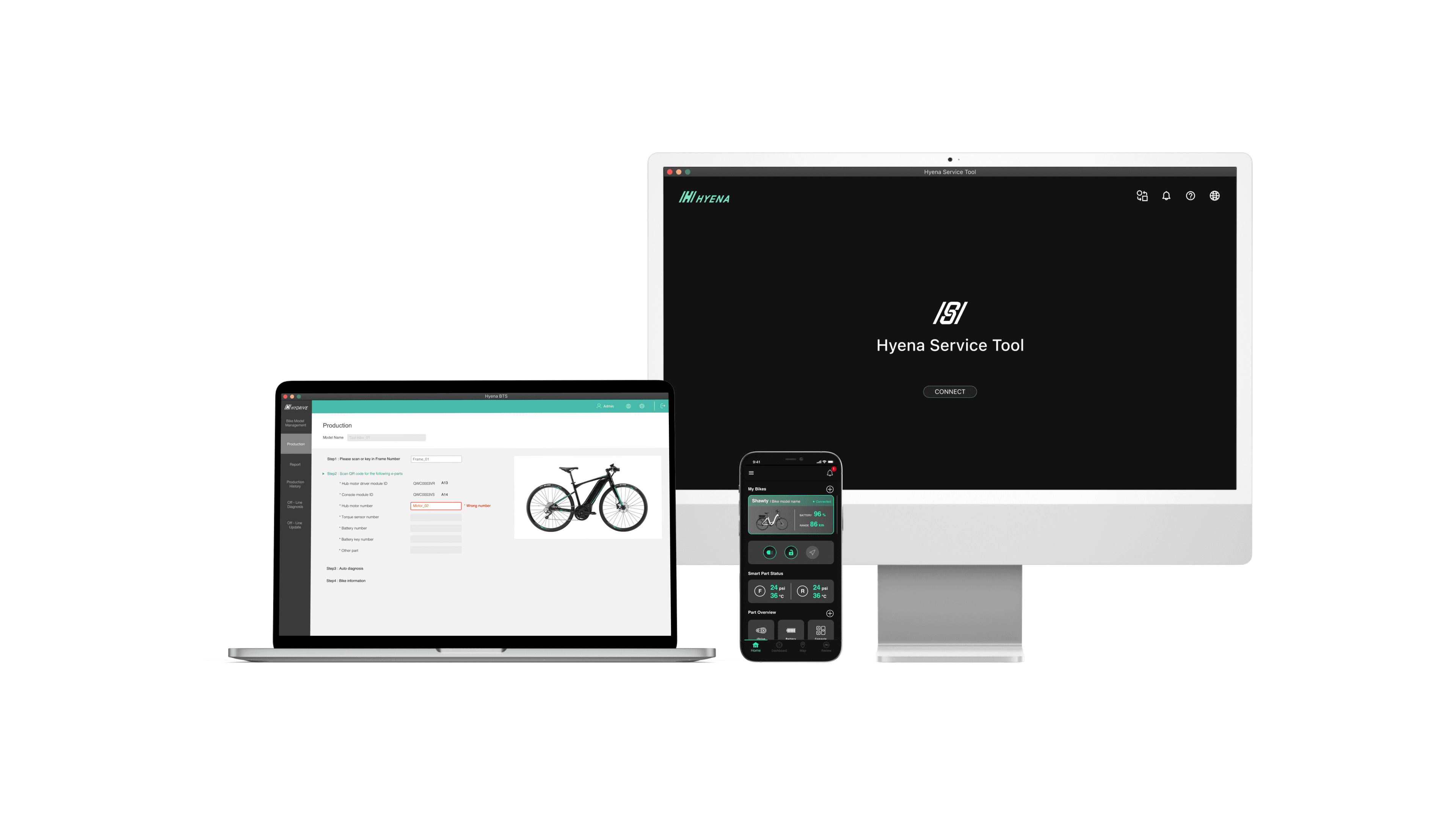
Work Experience
A Completed Software System Solution for E-bikes
Designing a new feature in the bike service tool to serve the need of the regional service center.
Role
Product Designer
Year
2020 - 2021
Team
1 UI Designer, 1 Product Manager, and 10 Software Engineers
Product Platform
Windows/macOS
Project At A Glance
Building a new feature to fit in the existing software system to create a consistent user experience.
The regional service center needed a new feature to support their daily task including checking the e-bike status and updating the e-bike configuration fast and efficiently. The original proposal was to customize one of the internal applications, however, after user interviews and system evaluation, we came up with a new design to provide an easy-to-use solution integrated into the existing application for users and lay the foundation for future product development.
This project demonstrates part of my work during my time in Hyena for the e-bike drivetrain system solution.
problem
The initial design decision led to not only bad user experiences, but also a complicated product design for maintaining, and adding new features.
solution
A new product design concept for the internal system to streamline workflows and a new user flow and new interfaces in the existing bike service tool.
# Background
In the early phase, Hyena developed software products based on the use cases, dividing all of the features into several different software applications to demo its ideas faster and show the ability to provide highly customizable solutions for its clients.
By 2020, as the company became stable, the disadvantages of this strategy came to the stage, it created an extremely deep learning curve for new users, not to mention it became a huge workload for the engineering team to only maintain the product, and difficulties of designing and developing new features.
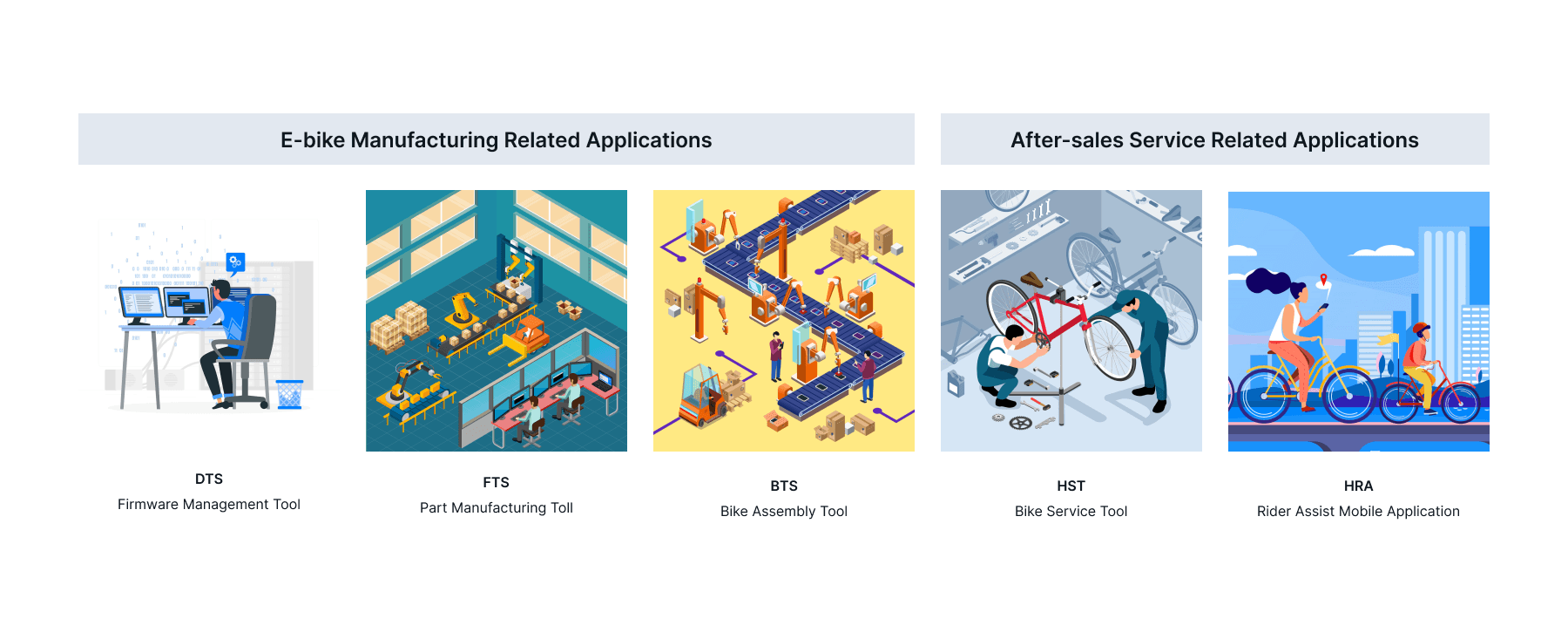
Hyena developed several software applications as a completed system solution covering the whole life cycle of the e-bike from manufacturing to after-sales services.
# The Challenge - Recapture the Aspiration
Our goal for this project is to recapture the aspiration for Hyena's software systems, which made Hyena stands out from the competition. The original concept was simple: provide an e-bike system solution with deep integration between software and hardware. Our ambition is to set a strong foundation to support future product developments as the business grows faster.
Our Goals were to,
- 1. Make it fast and easy to use for different users in every scenario.
- 2. Create a strong foundation to deliver new features of high quality and faster.
- 3. Create the product roadmap to lead the way for the future direction.
# My Role
I led the design for the e-bike assembly-related features(BTS) from September 2020 to August 2021 and collaborated with another designer on other e-bike service features.
I managed all of the software systems at the time except the rider's assistant mobile app, working alongside my manager(senior product manager), a senior firmware development manager, and ten software engineers.
I stopped working on the detailed visual of the e-bike service features as the user flow and wireframe were designed, and the collaborated designer finished the rest of the visual design with the existing design system.
# The kick-off - Connecting the dot
The main task at the time was to find a solution for the regional service center to update the e-bike configuration in different countries for the after-sales services.
The original solution was to provide BTS (the internal application used in the bike assembly factory) directly to the regional service center. However, it not only increases the need to provide additional user training, but also needs a lot of customized redesign in the BTS which couldn't be done in time.
Therefore, we started exploring existing workflows in the Hyena software system for possible solutions. At the same time, we decided to have the completed product review, understanding the user's pain points and real user experiences. With the understanding of previous direct feedback from users, I partnered up with my manager(who is also a senior product manager) to have interviews with key users using the system.
## Early Insight
We interviewed 6 key users to develop a full understanding of users' perspectives when they were trying to use the system to put e-bikes into production or prepare for the after-sales services. After synthesis of the interview results, here are the insights we got,
The e-bike information and management functions scatter across several different systems.
The bike model information should be accurate and consistent.
The whole system should streamline the process of bike information creation and management.
When manufacturing or adjusting the e-bike, stability and usability play an important role in the process.
It is hard to identify the bike model information and corresponding setting directly from an e-bike.
# the discovery
" The bike model information scattered across different internal software applications led to users' confusion, and data inconsistency. "
There was a huge gap between users' expectations and the existing system, which led to difficulties in maintaining the e-bike information for different clients and collaborating with every department.
## Deeper Insight
Before directly going into designing the new solution, we used the sequence model to help us identify the bottom necks of the workflow and be easy to come up with the solutions.
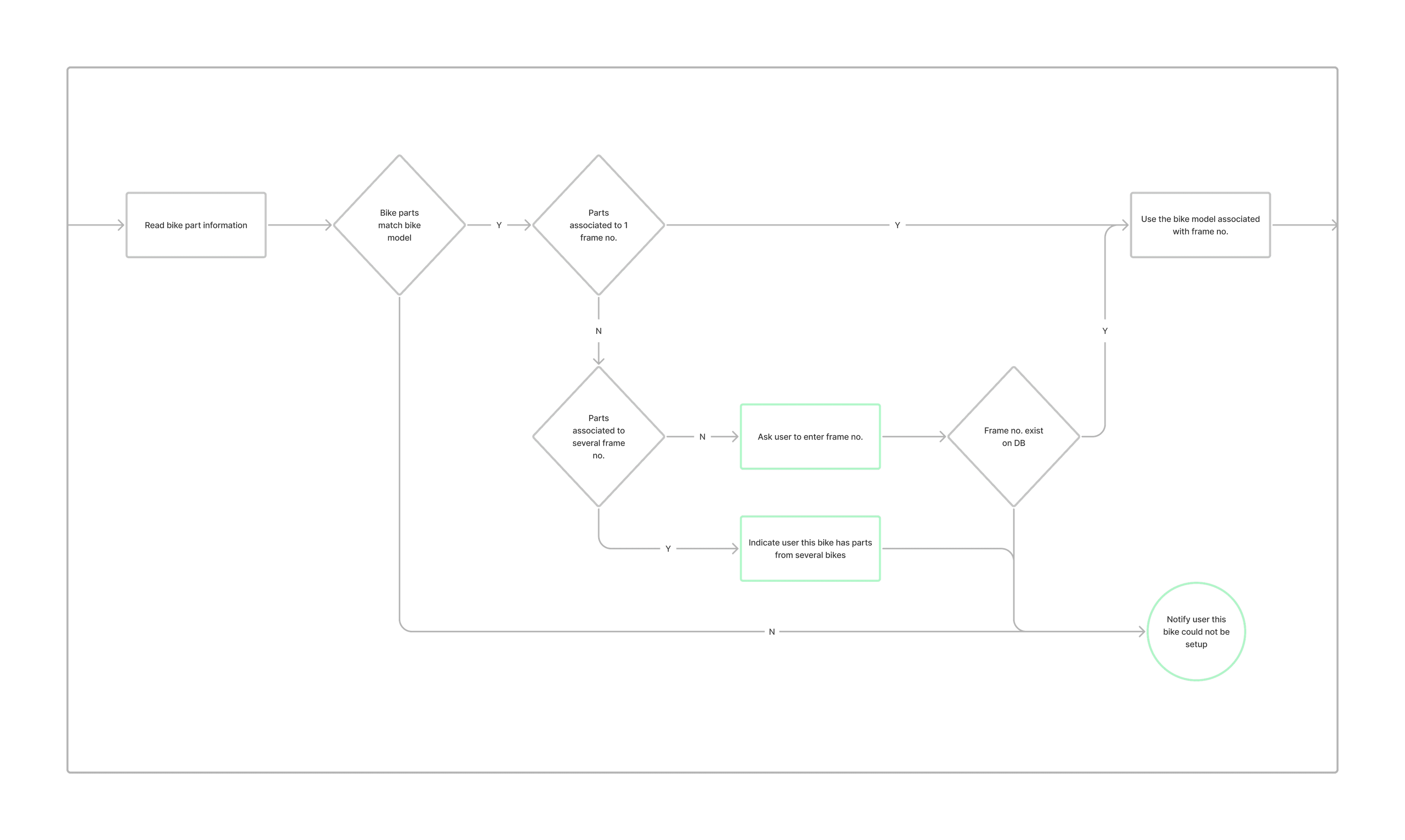
Part of the user flow in Hyena's system identifying the e-bike and asking users to enter the corresponding bike frame no. to configure the correct bike settings.
As we used the sequence model to examine the current workflow within the e-bike management workflows, we were appalled to find out that:
" 80% of the time in setting up the e-bike information is wasted by users checking the information accuracy and consistency between each feature, and application. "
Users have to manually go to each application to check whether the same information is maintained or not so that they can proceed to the next step in the workflow. Only after confirming everything is correct, those settings could be applied to the assembly line to start the e-bike production and later be used in the aftersales services.
# Reframing the Problem
## Poorly designed information architecture leads to time waste, and the accompanied deep learning curve of the system brings unpleasant user experiences.
The original product design makes the simple data be created and maintained in a complex way, which complicated the whole user flows and product design. The complexity of whole system brings more confusion and frustration to users and difficulties to collaborate with different departments just to fulfill an easy request.
" ...how might we help users in the regional service center utilize the Hyena software system to service the bike efficiently & easily? "
This seems like a simple feature to design, but it requires the whole system revamp to provide the completed solution for future product development.
# Solutions - Behind the scene
Set up the internal software system structure and streamline the entire workflow to lay the foundation for better user experiences.
## Product redesign at system level
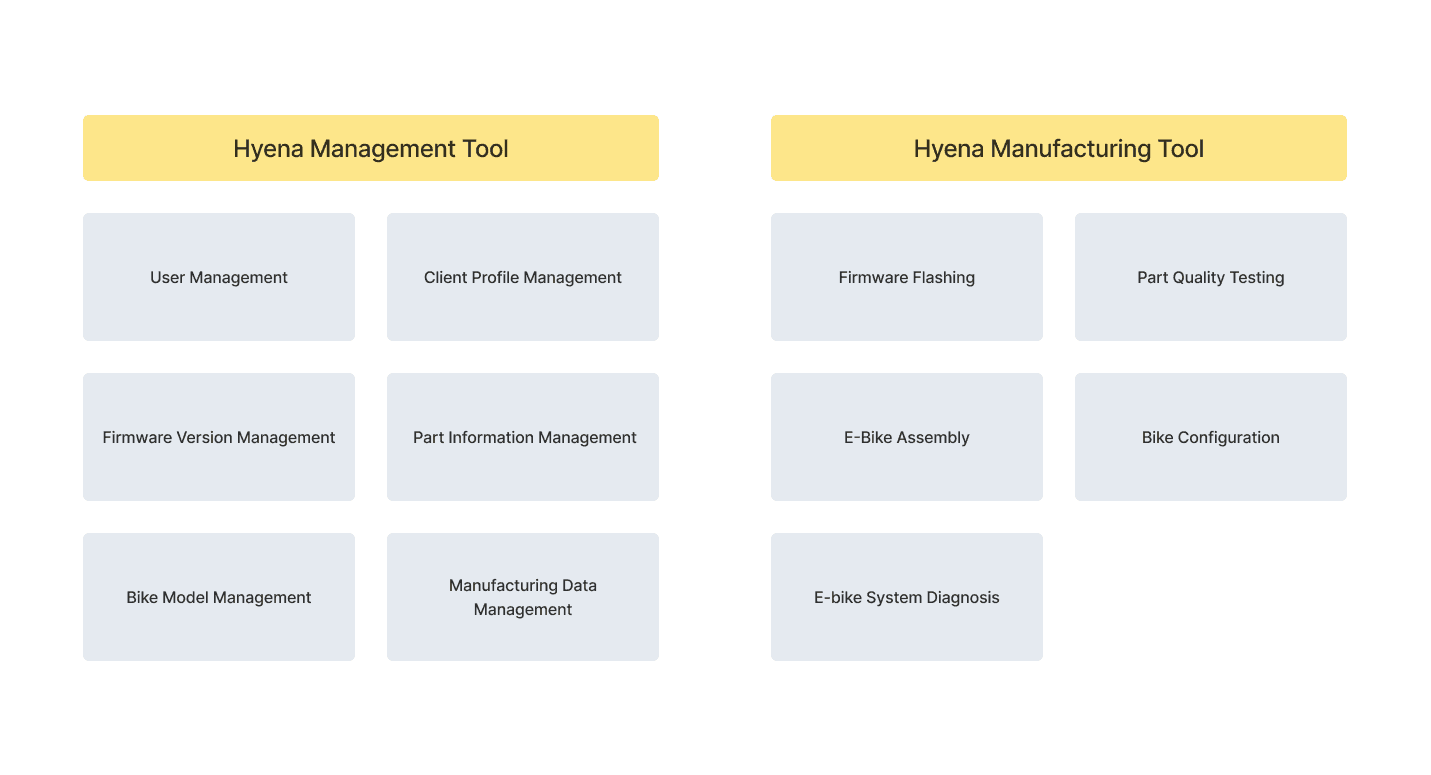
We divide all of the current system functions and features into two applications, Hyena Management Tool and Hyena Manufacturing Tool.
By integrating and simplifying the internal software applications from 3 to 2, and removing the replicated features in the application, there would have a centralized place to manage the whole information, getting rid of the need for users to jump around the application to check and maintain information.
Also, the engineering team would not need to maintain the same function in several different places. It would speed up the software development process and reduce the possibility of bugs.
Another major benefit of product management is, it helps to set the foundation and direction for the Hyena software system product roadmap.
## Bike model data structure
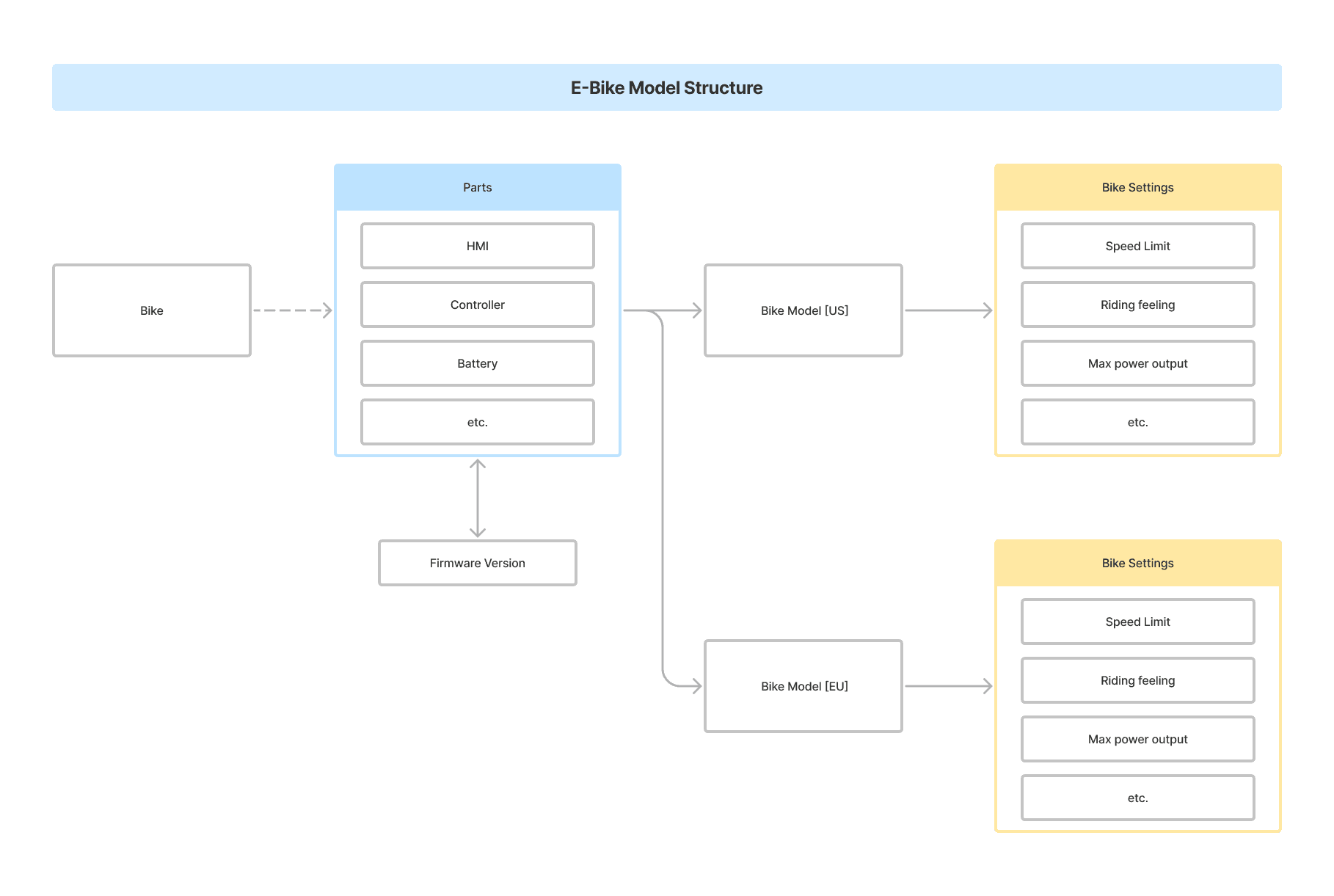
We introduce the bike model structure into the system, which serves as the foundation to streamline the information needed for the e-bike when it is being assembled and serviced.
It would be used as a foundation for the whole system to perform data validation across the whole system, making sure that all of the e-bike-related data would be consistent without any surprises.
# solutions - on the stage
Design a new user flow and user interface in the existing bike service tool to create a consistent user experience with easy access.
## Access the service center feature
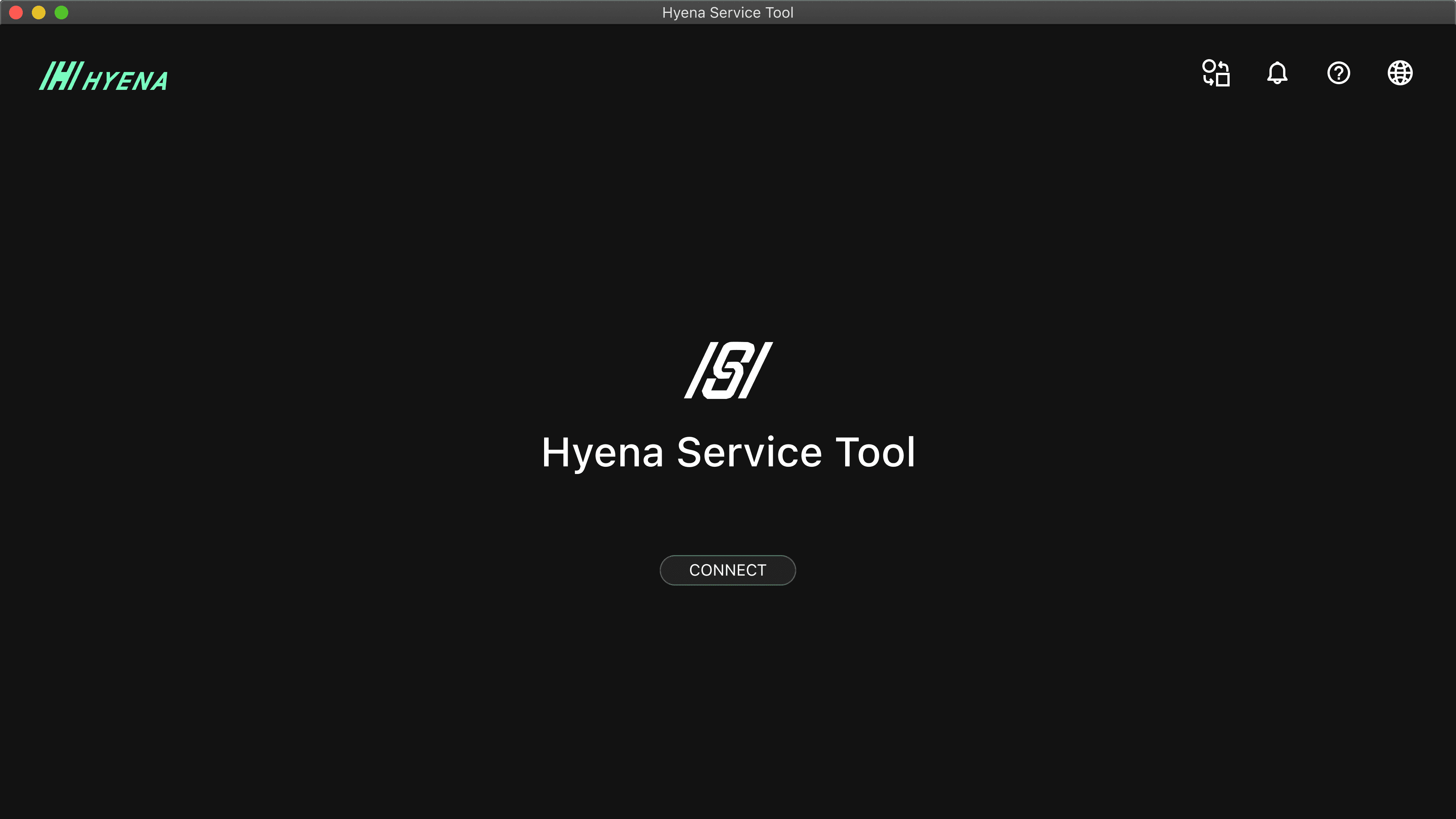
HST Homepage
To provide a consistent user experience, we integrate the service center features into the existing bike service tool. We add an icon in the top left corner menu for access to the service center feature page.
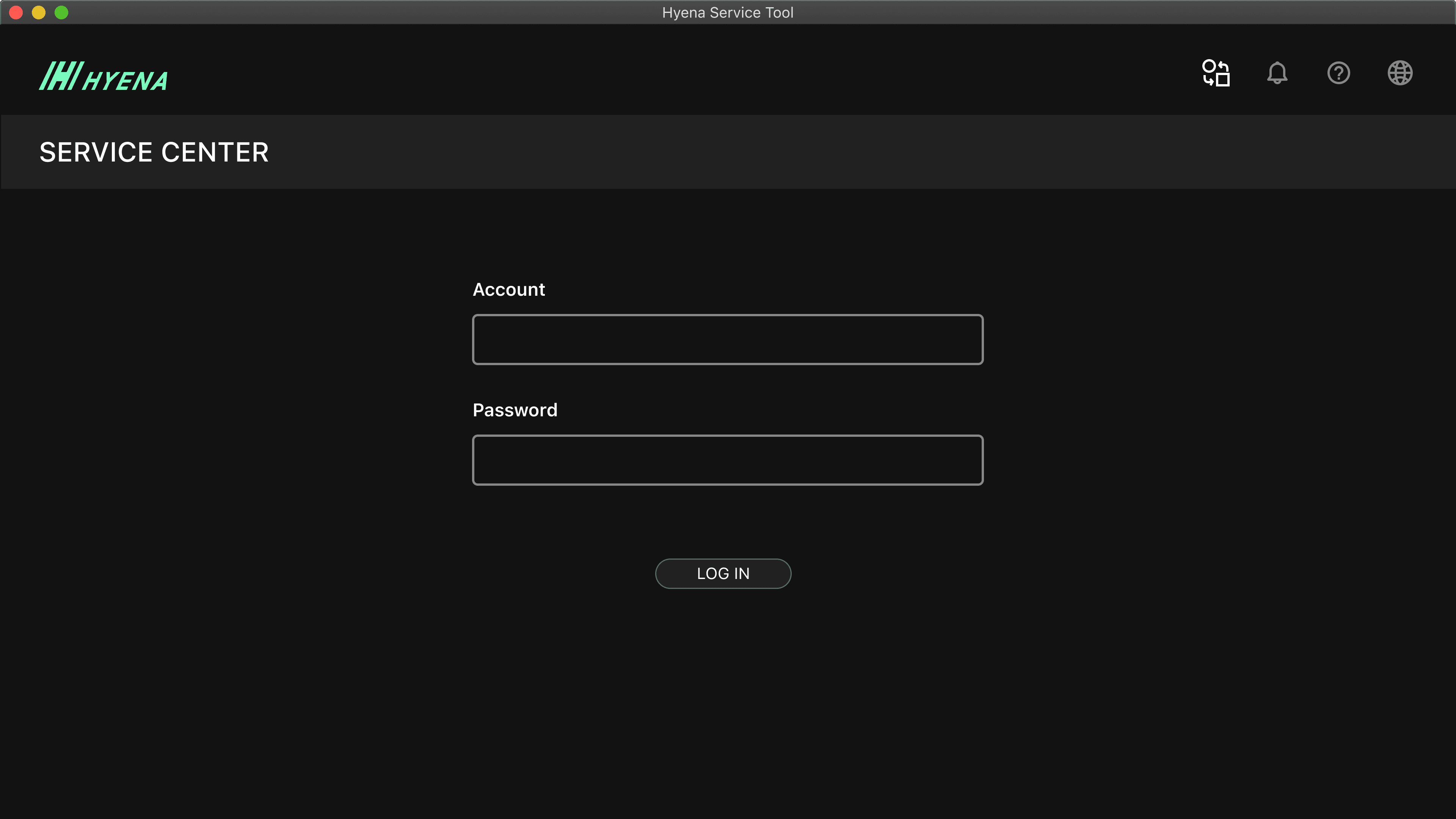
Serice Center Login Page
Unlike regular bike shops, the service center would be dealing with a more advanced configuration of the e-bike, which being constrained by local regulations, would require users to log in to access the feature.
By doing this, we could also keep track of all of the service histories from each regional service center for future client quality claims or research to improve the product.
## Select the bike model
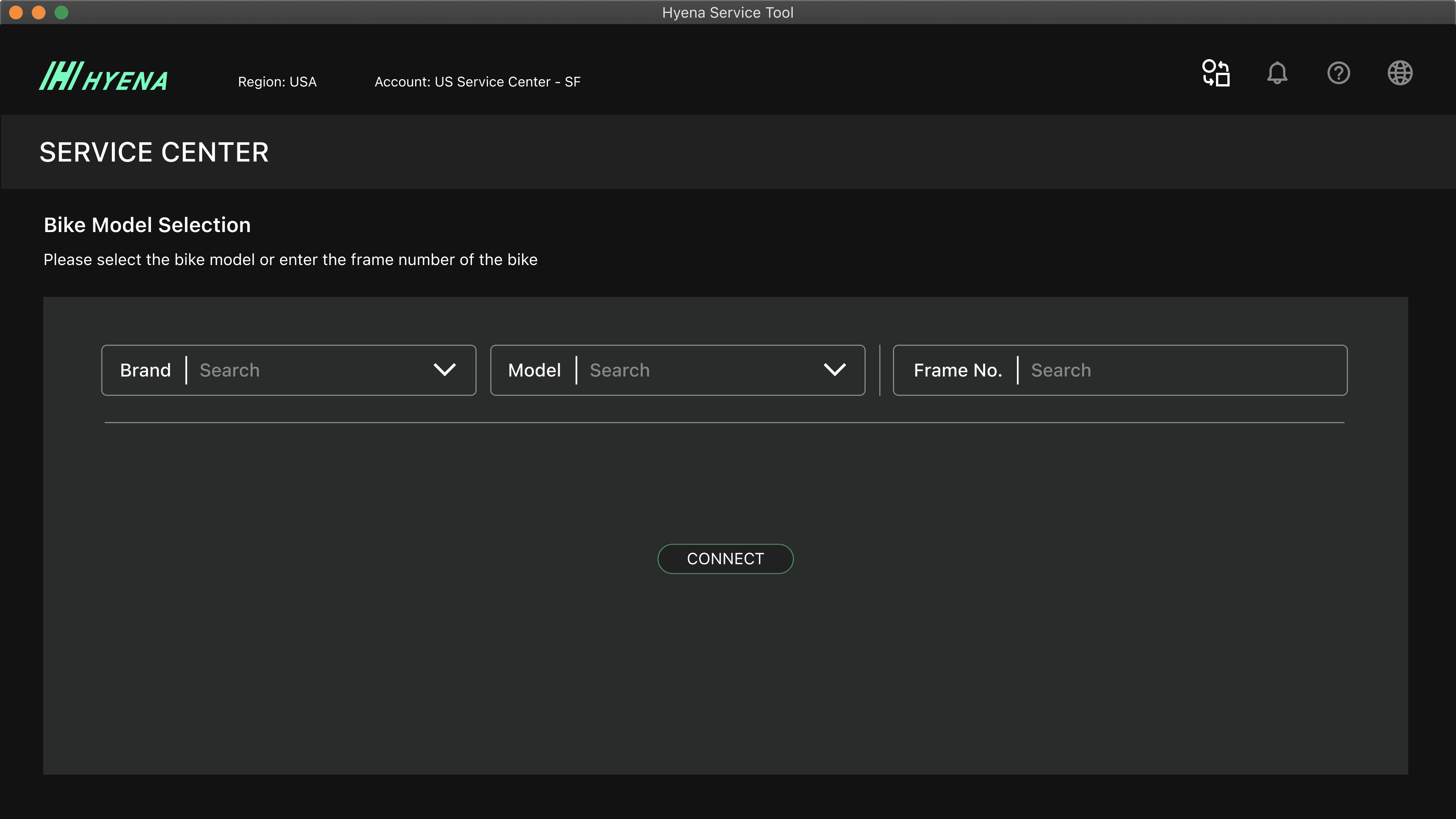
Serice Center Bike Model Selection Page
We keep the feature simple, that the user only needs to select the bike model, and connect the computer to the e-bike, and the system would take care of the rest.
We offer 3 ways for the user to select the bike model, by Bike Brand, by Bike Model Name, or by Bike Frame No.
## Service the bike
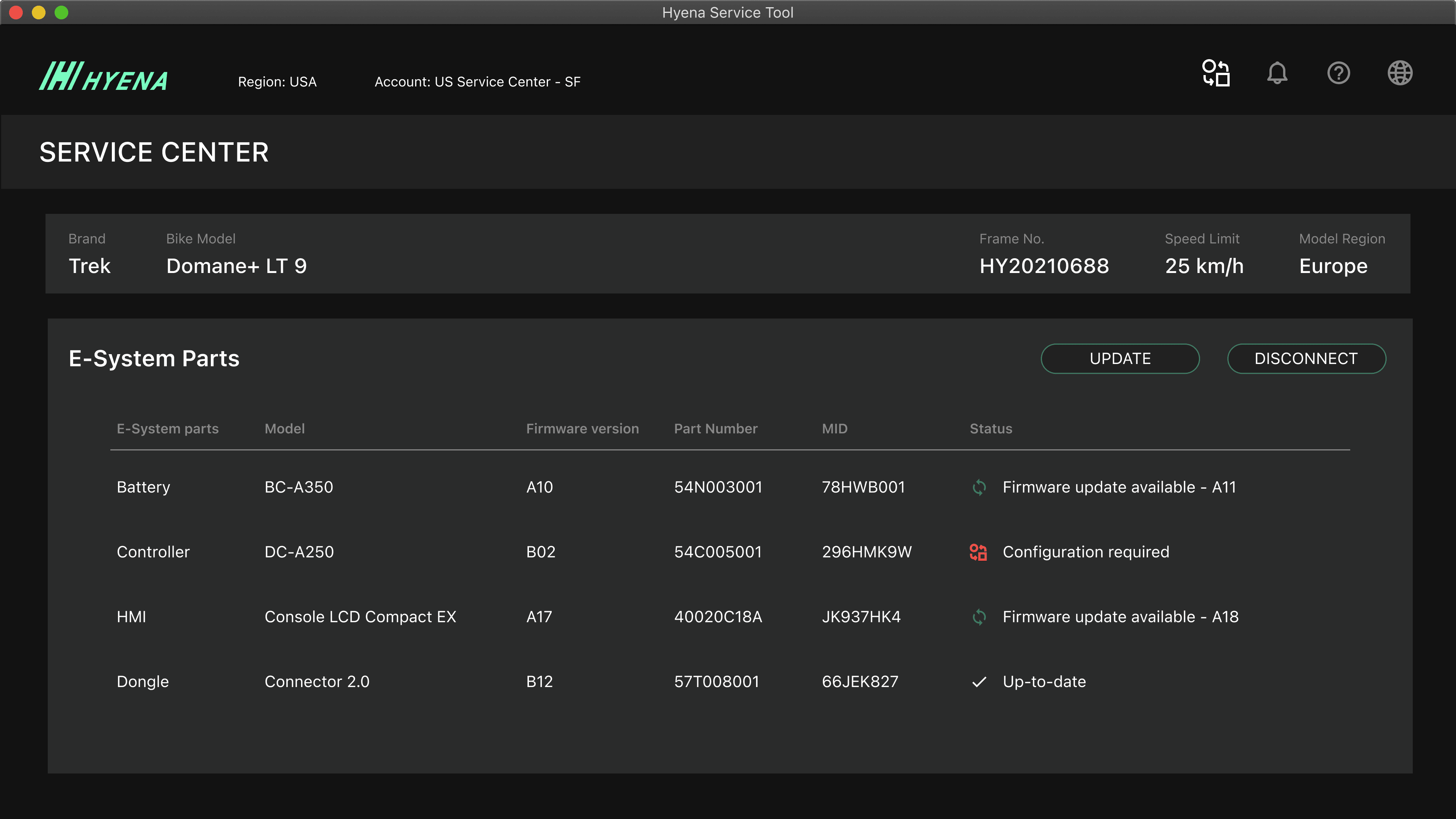
Serice Center Bike Status Page
Once the e-bike is connected, it would show all of the detailed information about the bike, from its part no. to whether the bike requires firmware update or re-configuration.
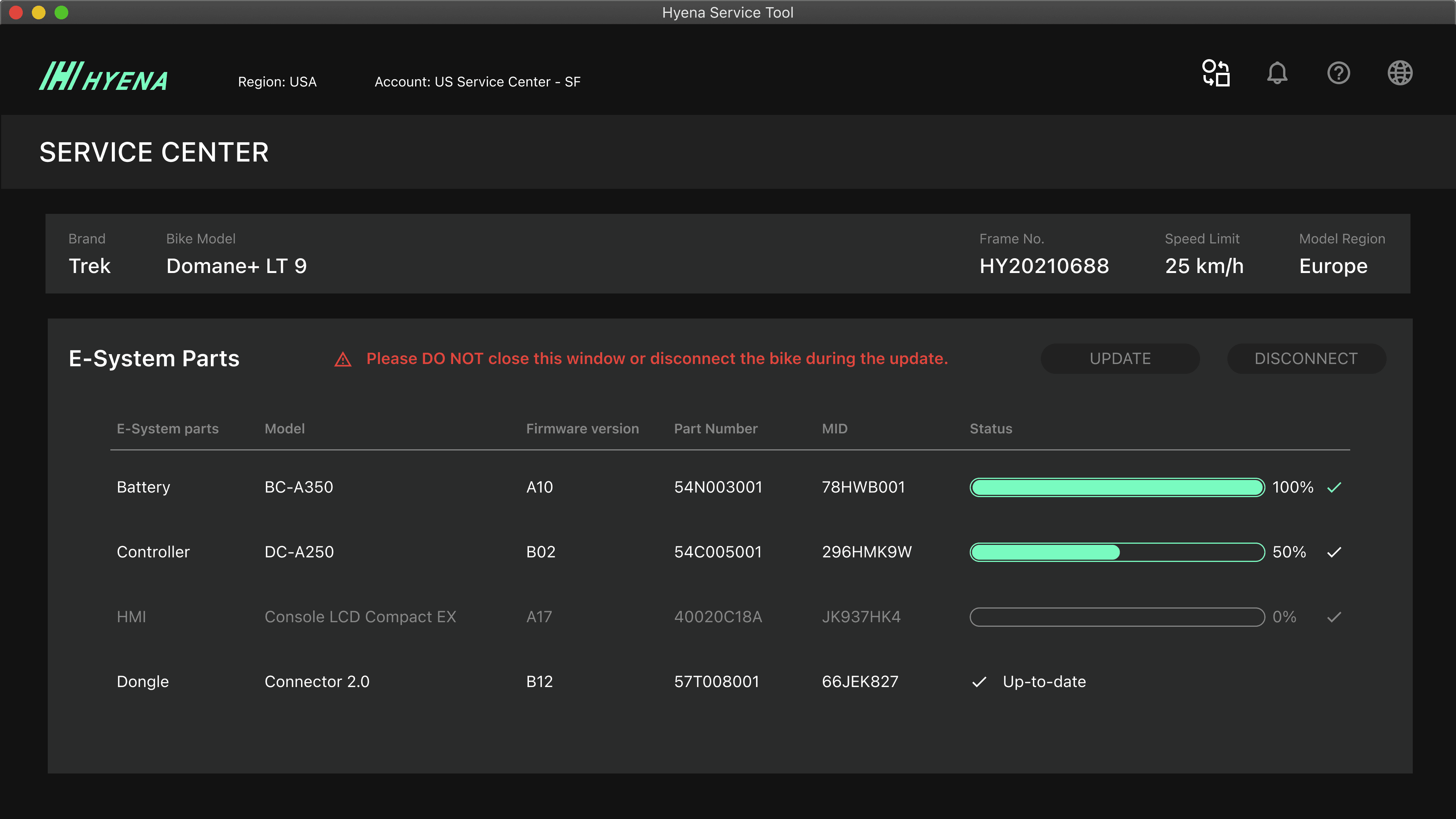
Serice Center Bike Upadting Page
During the updating or configuring of the e-bike, it would show the progress and status with a warning to remind users not to disconnect the bike in the progress.
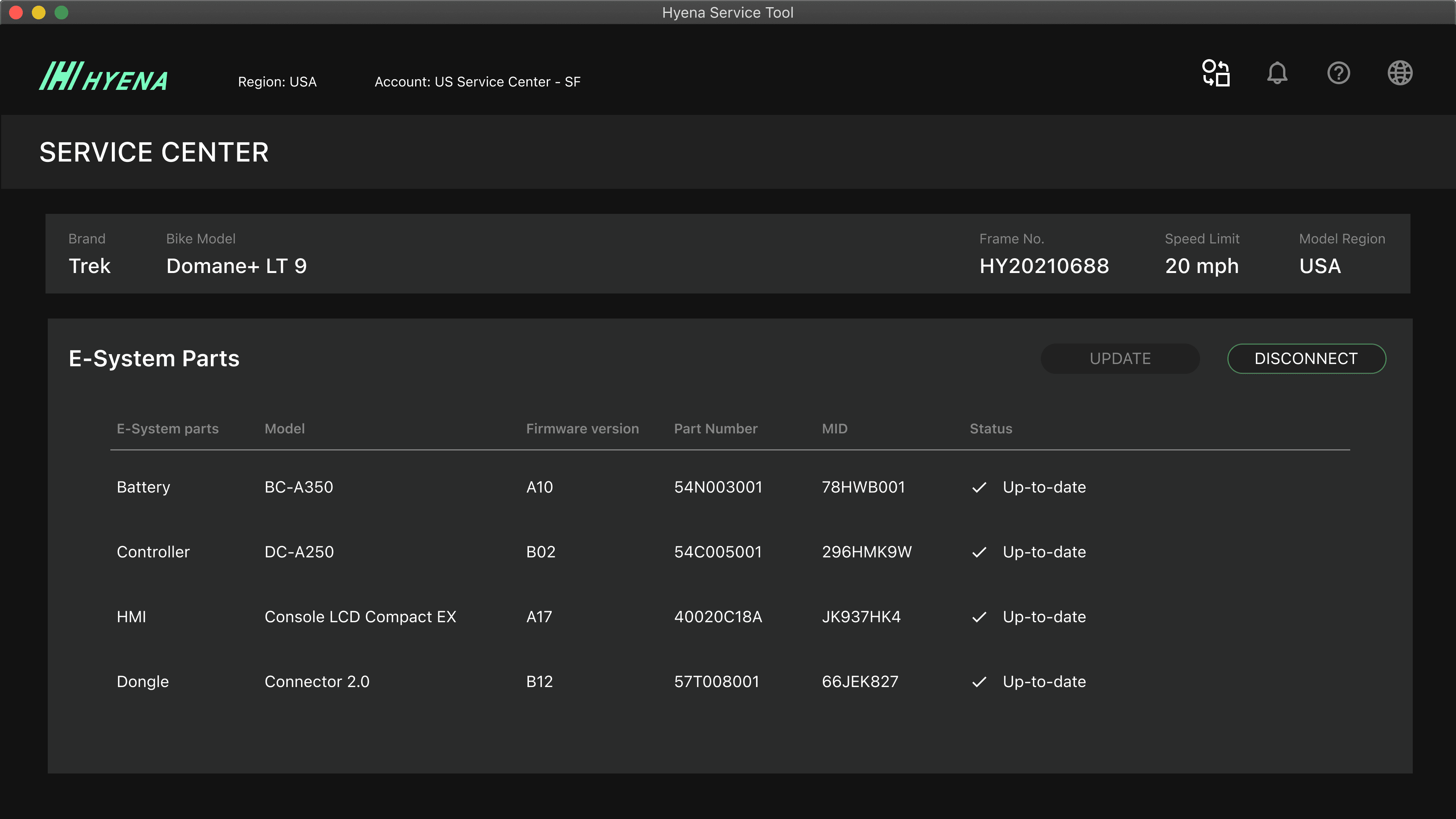
Serice Center Bike Update Complete Page
After the service is done, it would show the bike status with the new configuration and region setting.
# How we got here
During the whole product design process, those 3 questions were always on my mind to inform my design decision,
- 1. What should be considered?
- 2. Who are we designing the feature for?
- 3. What is the perfect solution for this situation?
## What should be considered?
In the early stage, as we receive the feature request from the regional service center, we started to figure out what they want. But before that, we needed to know the current situation to develop a proper solution. That's why we first started to look into the current system.
There are 2 points we discovered to be the key foundations to delivering a successful product in this scenario,
1. Data accuracy and consistency
The data in the system should be correct and in a consistent format that would be used in the future without the need to verify before using it in other processes.
2. Rescource allocation
The features in the whole system should be well planned which reduces the possibility to spend resources in dealing with the same time in different sectors of the system, especially in the startup environment, the resources should be carefully utilized.
That's why we decided to
- 1. Redesign the internal product again and introduce the bike model data structure for consistency.
- 2. Integrate the feature into the existing bike service tool, so the engineering team won't need to spend too many resources to re-do the same thing.
## Who are we designing the feature for?
During the time we investigated the internal system, we also conducted user interviews with the regional service center staff to know who they are.
There are some takeaways from the talks with them,
1. Clear about their task
They know what thing they need to do, and already have a higher level of understanding of the system(both software-wise and hardware-wise), which would not need to have concerns about abusing the system before providing more advanced features to them for their task.
2. Practical-oriented
Compared to the fancy user interface, they care more about how to have the essential information fast and solve the problem fast. The information is clear and easy to read is their top consideration.
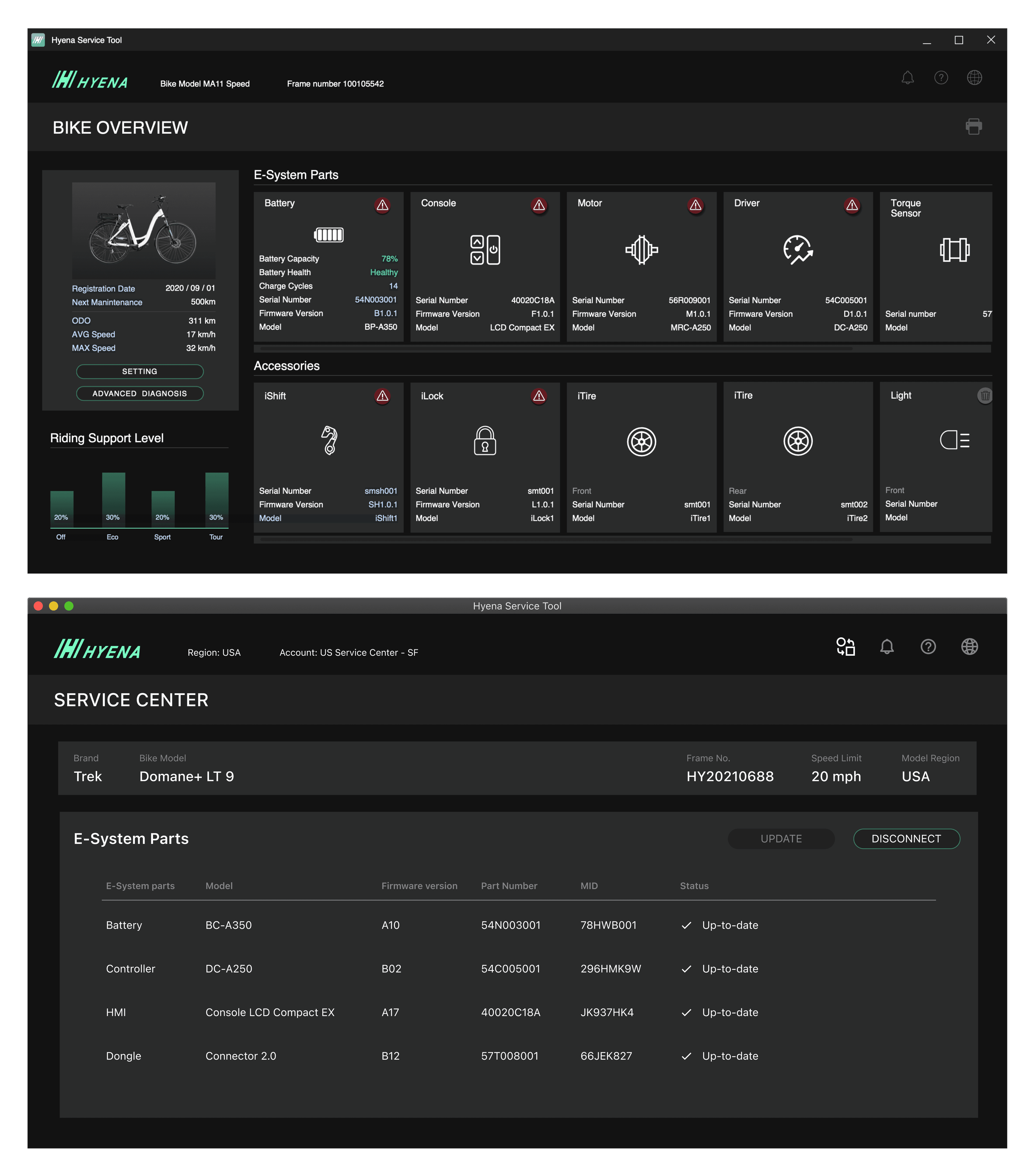
Top: The bike shop page, Bottom: The serice center page. The bike shop page provides more visual elements while the service center page focus on the functionality.
3. Environment setup
They have variable working equipment setups, different computer operating systems, and different existing dongles used to connect to the e-bike. So, the solution should be compatible to this situation.
That's why we decided to integrate the new feature into the existing bike service tool which
- 1. Users are already familiar with the tool and is compatible with different operating systems.
- 2. Interface design is different from the one for the bike shop users, which focuses more on showing the status and part information.
## What is the perfect solution for this situation?
Here comes my last consideration, what is the perfect solution? Based on the understanding from the previous 2 questions, we came to the conclusion that,
" A new feature in the bike service tool with the new interface for our users that is easy to use and can be delivered fast. "
To do that, we first need to streamline the data management in the internal system which would take a longer period to fully implement. In the meanwhile, since the bike service tool is in use already, we decided to design the feature in this application.
When designing the user flow in the system, and putting the consideration into how the system handles the task, we could tell that there are way more things we need to consider when we design the user flow.
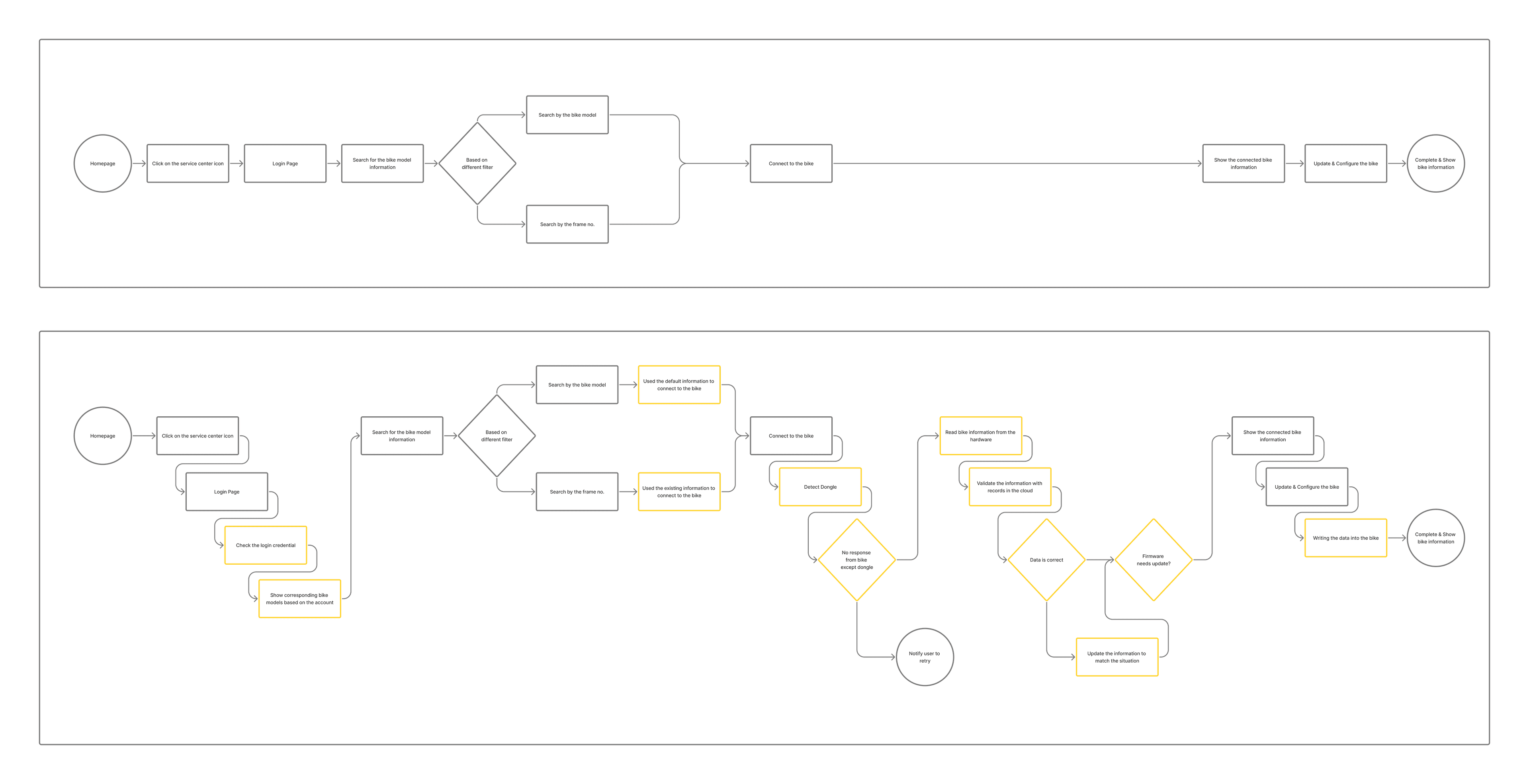
Top: The user flow, Bottom: The system process flow. It needs to consider more when designing the feature to make it practical and feasible.
The detailed process flow of the system handling this feature helps us to prioritize the importance of which part should be developed first in the internal system so that the feature could be implemented and delivered to users.
# Impact
By implementing the new feature in the existing bike service tool, we successfully
## Improved the overall usability making it easier for users to learn and use, at the same time reducing the time needed for the engineering team to implement new features.
Impacts in details,
- 1. Save 50% of the time required to service and re-configure an e-bike.
- 2. Reduce the time in development that theis feature can be delivered within 2 months.
- 3. Prevent additional costs to implement new software and provide trainings in service centers.
By redesigning the internal software system, We set the direction for the Hyena Software System 3.0 which would solve the fundamental issues in the system. It might take longer to develop and implement the whole system, but when we started to organize the data such as bike model information, we received positive feedback from users already.
# Takeaways
## Observing the root cause
When conducting user research on the product involves operation between software and hardware, we need to consider how users are using the product and try to find out what's causing the issue instead of only thinking about how the interface influences users.
## Best solution?
What is the best solution? The solution is the one that is feasible, solves the user's real need, and provides business values. Sometimes, we tend to get lost in the user's voice that ignore the value behind that. It is important to find the balance so that the product can move forward. But from time to time, the product would become user-friendly eventually if we are on the right track.
On the side, I always think about how the product design influences users' behaviors and the design mindsets/strategies behind it, which always surprises me. I enjoy talking to random people and learning something new from them, either their life experiences or tips for finding a parking space in an overly crowded city.